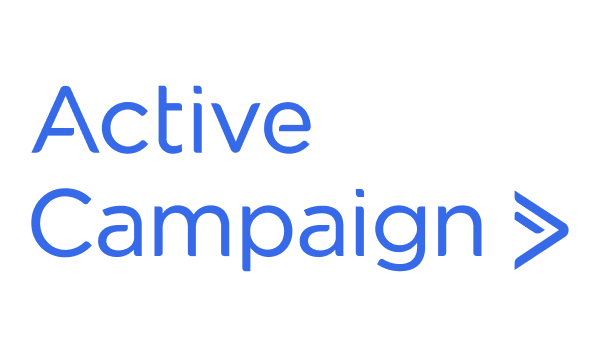- Premium features included
- No hidden costs or usage limits
- Scale from startup to enterprise



Let’s be honest — choosing an email marketing platform can feel overwhelming. After spending years working with both Kit and ActiveCampaign across dozens of client projects, I’ve noticed they serve fundamentally different audiences despite competing in the same space.
I’ve watched creators flourish with Kit’s straightforward approach while seeing ecommerce brands transform their customer relationships through ActiveCampaign’s sophisticated automation. Your business goals and marketing complexity will ultimately determine which platform delivers better value for you.
In this comparison, I’ll walk you through what I’ve discovered about both platforms’ strengths, limitations, and ideal use cases. My goal isn’t to crown a universal winner, but to help you identify which tool actually aligns with your specific marketing ambitions.
Kit
ActiveCampaign
Best For
Creators, bloggers, small businesses
Ecommerce brands, advanced marketers
Pricing
Starts at $15/month (Free plan available)
Starts at $29/month (14-day free trial)
Ease of Use
Very easy to use, minimal setup
Feature-rich but steeper learning curve
Value for Money
Great for simple email marketing & creators
Excellent for advanced automation & CRM
Kit
ActiveCampaign
Strengths
Weaknesses
Kit
ActiveCampaign
Email Campaigns
Automation
Landing Pages & Forms
Segmentation & Personalization
Reporting & Analytics
Integrations
I’ve watched numerous content creators thrive with Kit’s approach. The platform strips away unnecessary complexity, focusing instead on what matters most to creators – building relationships with their audience and monetizing their expertise.
The tag-based subscriber management system deserves special mention. Rather than forcing users to maintain multiple lists (which gets messy and expensive), Kit uses a single audience with tags for segmentation.
A coach I work with uses this to effortlessly distinguish between prospects, current clients, and alumni without creating separate lists.
What impresses me most about Kit is how it scales with creators. A course creator I consulted with started with a small list and grew to over 40,000 subscribers without ever feeling limited by the platform’s capabilities.
Their unlimited emails across all plans (including free) is particularly valuable for creators who communicate frequently. That said, you’ll eventually bump into limitations if you need sophisticated behavioral targeting.
A client selling premium cooking courses wanted to send different follow-up sequences based on which recipe pages subscribers viewed — and we simply couldn’t configure Kit to handle this level of tracking and personalization.
ActiveCampaign approaches email marketing from an entirely different angle, focusing on sophisticated customer journeys powered by behavior, segmentation, and multi-channel coordination.
Their automation builder is genuinely impressive. An ecommerce client implemented a workflow that automatically segments customers based on purchase history, engagement levels, and website behavior.
The system then delivers personalized product recommendations and perfectly-timed reorder reminders, resulting in a 28% increase in repeat purchases over three months.
The CRM capabilities create opportunities that Kit can’t match. A consulting firm uses ActiveCampaign to score leads based on email engagement, website visits, and form submissions, then automatically assigns high-value prospects to the appropriate consultant.
This alignment between marketing and sales has tangibly shortened their sales cycle. The trade-off? Complexity. Even tech-savvy marketers typically need weeks to become truly proficient with ActiveCampaign’s feature set.
A digital agency owner described it as “like learning to fly a small plane – challenging at first, but incredibly powerful once you know what you’re doing.”
Subscriber Count
Kit Pricing (Creator Plan)
ActiveCampaign Pricing (Marketing Lite Plan)
Key Differences
1,000
$29/month
$39/month
Kit is cheaper; ActiveCampaign offers CRM & automation from entry-level.
2,500
$49/month
$61/month
Kit remains more affordable; ActiveCampaign adds advanced segmentation & reporting.
5,000
$79/month
$99/month
Kit focuses on creators; ActiveCampaign supports multi-step automation & sales tools.
10,000
$119/month
$174/month
ActiveCampaign excels in multi-channel marketing (email, SMS, CRM).
25,000
$199/month
$286/month
Pricing gap narrows; ActiveCampaign provides deep ecommerce and sales integrations.
What I’ve found fascinating is how differently businesses perceive this pricing. For content creators focused on newsletters and digital products, Kit’s lower cost often makes perfect sense.
But for ecommerce brands generating direct revenue through email, ActiveCampaign’s premium is frequently seen as an investment rather than an expense.
A boutique clothing store I advised calculated that ActiveCampaign’s abandoned cart recovery alone generated an additional $2,100 monthly revenue — making the extra $30/month seem trivial by comparison. This kind of ROI calculation doesn’t show up on pricing pages but becomes evident in actual implementation.
Kit Free Plan
ActiveCampaign Free Plan
Subscribers
Up to 1,000 subscribers
No free plan (14-day free trial only)
Emails/Month
Unlimited emails
Unlimited emails during trial
Automation
Basic visual automation
Full automation access during trial
Landing Pages/Forms
Unlimited landing pages & forms
Advanced forms & site tracking during trial
Branding
Kit branding on emails & pages
No branding during trial
After guiding dozens of businesses through this exact decision, I’ve developed some clear guidelines:
Choose Kit if:
Look toward ActiveCampaign if:
Neither platform is universally “better” — they’re designed for different business needs and marketing approaches. The good news is that both offer ways to test their platforms before fully committing.
Kit
ActiveCampaign
Kit really shines as an approachable email marketing tool built with creators, bloggers, and solo entrepreneurs in mind. What I love about it is how user-friendly everything feels — the interface is clean, pricing is reasonable, and there’s that free plan with unlimited emails that makes it perfect for small businesses focusing on building their list.
They’ve also got some nice creator-specific features like tools for paid newsletters and straightforward automation workflows.
That said, there are trade-offs. If you need complex automation sequences, detailed reporting, or extensive integration capabilities, you might find yourself hitting Kit’s ceiling pretty quickly. It’s not really designed to scale for businesses needing elaborate customer journeys or heavy ecommerce functionality.
ActiveCampaign is definitely the more robust platform, built for growing businesses that want to level up their marketing with sophisticated automation, personalized messaging, and integrated CRM tools.
Where it really stands out is with multi-step workflows, behavior-triggered actions, dynamic content options, and seamless connections to ecommerce platforms like Shopify and WooCommerce.
It’s a fantastic choice if you’re focused on creating detailed customer journey automation and engaging across multiple channels. Just keep in mind that the extra horsepower comes with a higher price tag and a steeper learning curve.
It’s better suited for marketers with some experience or businesses ready to invest time and money into advanced marketing capabilities.
The aggregate ratings tell part of the story:
Kit consistently gets high marks for its clean, straightforward interface. Many users mention how easy it is to set up campaigns, automation, and landing pages without needing technical expertise.
ActiveCampaign, while praised for its advanced capabilities, isn’t quite as intuitive for beginners. Users appreciate the visual workflow builder but often note that really mastering the platform takes time — especially if you’re new to marketing automation tools.
There’s no question that Kit offers a gentler onboarding experience, making it perfect for creators and small businesses who want to hit the ground running without dealing with technical complexities.
ActiveCampaign definitely requires more time to learn, mainly because of its advanced automation features, CRM tools, and detailed segmentation options. Interestingly though, experienced marketers often see this complexity as a plus, since it allows for greater customization and control over their campaigns.
Kit users frequently highlight the excellent creator-focused support, reliable email delivery rates, and intuitive automation tools. I’ve noticed some reviewers wish they had access to more advanced analytics and deeper integrations with other tools.
On the ActiveCampaign side, users consistently praise the powerful automation capabilities, ecommerce integrations, and robust segmentation tools.
At the same time, some reviews mention that getting everything set up and navigating the platform can feel overwhelming if you’re new to the game — particularly if you’re just managing basic email campaigns.
